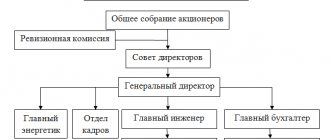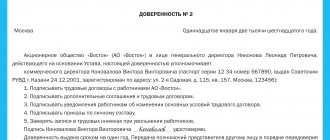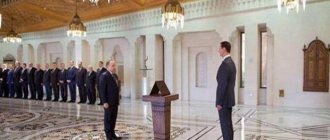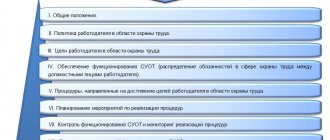Time after time I am faced with a lack of understanding among managers of the meaning of functional subordination. With the administrative side it’s still somewhat clear. But as soon as it is necessary to apply functional subordination, I come across a blank wall of misunderstanding: “Functional? How is it?"
This article will be useful for managers of companies with a branched structure, in which there are several branches or several stores in a retail network - where functional subordination is guaranteed to occur.
The article is also useful for managers of companies with a simple structure in order to increase the competence of employees through the use of functional managers where they are usually not used due to ignorance of this possibility.
Let's start with definitions
Administrative head is the head of a unit who is responsible for the general organization of the activities of the unit’s employees, for the scope of tasks assigned to subordinates and their results, as well as for the compliance by the unit’s employees with all the rules (requirements) adopted by the enterprise. In fact, the administrative manager is the owner of the resource - the working time of his subordinates.
Functional manager is a manager who organizes the activities of an employee performing a function in the area of competence of this manager. The functional manager does not own the resource of any employee time; he is forced to receive this resource from the administrative manager. This is where the conflict of interest arises.
The definitions of administrative manager and functional manager are taken from the Dictionary of Business Terms, which is mainly filled with my own terms.
Typically, an administrative manager is also a functional manager. For example, the chief accountant is the administrative manager for the accountant-cashier, and also, as a functional manager, is competent in organizing his work; The head of the sales department is the administrative manager for the sales manager, and must also be able to organize his work with clients.
But there are cases when for an employee there is one administrative manager, and another functional one. For example, in a chain of stores, the administrative head of the cashier in the store will be the store manager, and the functional head will be the chief accountant, since he is the one who is competent to competently organize work with the cash register and with documentation.
Now let’s look at the problems of all three categories of enterprises one by one:
- companies with branches;
- companies with a network of retail stores;
- a company whose employees are located in one location.
There are different approaches to the classification of organizational management structures.
Depending on the type of relationships between participants in the management process, the following types of management structures can be distinguished:
- linear;
- functional;
- linear-functional;
- matrix;
- divisional;
- combined.
Linear organizational management structure
This is one of the simplest structures. It uses the principles of centralism and unity of command. Each team is headed by a manager who is accountable to a superior manager.
The manager is responsible for the results of the team's work. Subordinates carry out orders only from their immediate superior. A superior manager cannot give orders to employees without bypassing their immediate superior. In the process of enterprise management, a hierarchy of managers is formed (for example, general director - production director - chief - foreman - foreman).
The positive aspects of a linear structure include the following:
- efficiency of making and implementing management decisions;
- relative ease of control;
- ensuring unity of management from top to bottom;
- consistency of actions of performers.
The disadvantage of this structure is that the manager must be knowledgeable in many areas of management, and this leads to his overload and lack of competence in decision-making. Along with this, there is a disconnection of horizontal connections, and in the presence of a large number of management levels, the adoption of management decisions is delayed.
Functional management structure
In this structure, specialists of the same profile are united into specialized structural units. For example, planners work in the planning department, finance specialists work in the finance department, and marketing specialists work in the marketing department. Management, starting from middle management, is structured along functional lines.
Advantages of a functional management structure:
- specialization of managers and specialists improves the quality of management decisions made;
- liberation of line managers from functions unusual for them.
The disadvantages of the functional structure include the lack of close relationships at the horizontal management level. In addition, the principle of unity of command ceases to apply, since the executive can receive instructions from several functional managers.
Disadvantages also include unclear responsibility, since the one who prepares the decision is usually not involved in its implementation.
Linear-functional management structure
A special feature of this structure is that management is carried out by line and functional managers. The line manager has a special staff (headquarters), consisting of management units (departments, services, groups, individual specialists) that specialize in performing one management function. At the same time, the line manager has complete authority over all management objects and functions.
There are two types of functional managers: those who implement one or more management functions.
This structure combines the advantages of linear and functional structures.
The disadvantages of the structure include the expansion of the management apparatus, its bureaucratization, the time for decision-making increases due to the need for approvals, and the problem of coordinating functional services remains.
Linear-functional management structures are currently the most common types of structures. The linear-functional type of structures is especially effective where the management apparatus performs repetitive standard procedures. It creates favorable conditions for the formalization of powers and responsibilities, but does not always have the necessary flexibility when new tasks arise.
Matrix management structure
This structure allows you to quickly respond to market changes due to its flexibility.
It is formed by combining two types of structures: linear and program-targeted. In accordance with the linear structure, management is built vertically: divisions are created that manage individual areas of activity - production, sales, supply, etc. In accordance with the program-target structure, horizontal management is carried out - program and project management, that is, the main task is to develop programs. Each program may include a number of projects.
To develop a program (project), a so-called matrix group , to which employees from various departments are sent. Members of the matrix (project) group have double subordination. On the one hand, they report to the program manager, and on the other, to the functional head of the unit (department) in which they constantly work. The powers of the project (program) manager are delegated by senior management, so they may vary depending on the complexity, importance and urgency of the project.
In a matrix structure, there is a distribution of program management responsibilities. The program manager is responsible for the quality and timing of program development. It is the responsibility of functional managers to create the necessary conditions for program development.
This structure is most effective when there is a need to develop and produce high-tech products, introduce technological innovations and quickly respond to market fluctuations.
The advantages of the matrix structure include the fact that it becomes possible to quickly rebuild the structure of the team when setting and solving new problems (flexibility and adaptability). Managers and specialists at all levels are involved in active creative activities to improve production. The efficiency of using resources and, above all, human resources is increasing.
However, the application of this structure is associated with a number of difficulties.
The main disadvantage is the complexity, which is associated with the need to establish and coordinate numerous connections.
Disadvantages also include the need for periodic retraining of workers due to program changes.
Matrix groups are not stable formations. When using them, workers constantly move from the main workplace to project groups and the entire organization becomes, as it were, temporary.
Divisional management structure
This structure uses the democratic principle of management. Centralization of strategic decisions at the highest level of management is combined with independent activities of lower divisions (divisions). The company's top management (president, management board, board of directors) determines long-term guidelines and responsibility for generating profit.
The structure is often used by international companies with branches in different countries.
The divisional management structure has a number of varieties. The main types include the following:
- regional;
- grocery;
- consumer.
The regional structure assumes that management is carried out for certain types of products produced in different territories of the country or abroad.
The structure allows maximum consideration of the specifics of local legislation, customs and consumer needs.
The peculiarity of the product structure is that the authority to manage the production and sales of any product is transferred to one manager, who is responsible for this type of product.
This type of management is typical for companies with a widely differentiated product range.
By using a product structure, a large company can pay as much attention to a specific product as a company that produces one or two types of products.
This structure allows the company to quickly respond to changing market conditions.
The consumer structure considers the needs of the buyer as the main object of management. The company's divisions are created based on meeting the needs of certain consumer groups.
This allows you to better know and meet the needs of specific customer groups. The consumer, in turn, gets the impression that this group works only for him.
The disadvantages include the following:
- multi-level management, which leads to bureaucratization and increased management costs;
- duplication of resources and functions in the management process.
Combined management structures
In this case, within the same organization, depending on the characteristics of the divisions, linear, functional, matrix and other management structures can be used simultaneously.
In many cases, the highest level of management has a linear-functional structure, and the middle level can have a variety of management structures. This allows you to better take into account the characteristics of the company and take advantage of different management structures.
The problem of companies with branches
Large companies like to use fancy terms. For our case, the structure of a company with branches will be called a divisional or matrix structure. Who likes it more? Unfortunately, having a fancy name does not make branch management any easier. But, rather, on the contrary, it creates additional problems with determining the areas of responsibility of employees and conflicts between managers."
The structure of " looks like this:
The Center has two key managers - the General Director of the company and the Sales Director of the company. The Sales Director reports to the General Director, everything is clear here. The “Branch” also has two managers - the Branch Manager and the Head of the Sales Department (ROD) of the branch. The ROP of the branch reports to the Manager, everything is also simple here.
| Practical task. Before reading further, answer the question: “Who does the Branch Manager report to?” |
Difficulties begin when the question arises about the relationship “Sales Director – Branch ROP” (red arrow in Diagram 2). Communication, as they say, “through the head of the Branch Manager.” There is a violation of subordination, a conflict is guaranteed.
Subordination is the position of an enterprise employee in the system of “superior-subordinate” relations that have developed in society. Compliance with subordination is the adherence of all members of the work collective to the established rules of relationships between persons of different hierarchical levels of the enterprise’s vertical of power.
Or the relationship “Sales Director – Branch Manager” (blue arrow in diagram 2). There is a wedge in the administrative connection “General Director – Branch Manager”.
The conflict between managers “can be represented graphically:
Why does the Sales Director need to wedge himself into administrative connections (black arrows in the diagram), violating the accepted norms of subordination? Obviously, it is his responsibility to organize sales in all branches. The General Director needs him as a competent sales organizer for the company. I suppose that is why they introduced the position of Sales Director, which not everyone liked in the above scheme.
The sales director is a classic functional manager with remote resources scattered across branches.
How to manage a branch?
Text | Andrey PETROV, director of information services of the regional division of the First House of Consulting “What to do Consult”
Basic principles of remote management of a branch network.
As a rule, the main goal of creating a branch network is to increase customer satisfaction with the range of services provided in this region. To achieve this, it is planned to move service and sales control centers closer to customers.
A significant additional argument for deciding to develop a branch network is that specialists will have additional time to perform their direct duties, which will certainly increase the efficiency of their work. Lower financial costs compared to a management system from the head office also play a role.
When undertaking the creation of a branch network, of course, one should not lose sight of such a significant drawback of remote management as the difficulty of controlling the work of branch employees from the head office. The lack of constant contacts between branch employees and employees of the “metropolis” also threatens difficulties in so-called human communications.
In this article, based on an analysis of personal experience, I will try to formulate some basic principles that must be followed when managing a branch network.
They are grouped into four sections.
Branch managers
For the normal operation of a remote unit, a good leader is a key factor. Its careful selection is the key to successful work in the future. There is no rush here, but you shouldn’t hope that you will find a “100% suitable” one. It is more important to find a manager who is capable of doing what you want from him in the future and who has development potential. At the same time, it must be taken into account that if you have leadership qualities and appropriate intellectual potential, you can teach to be a good manager, but it is unlikely to change the level of general culture and internal moral standards. Yes, and there is no such business task in a commercial organization...
The most important quality of a branch manager should be confidence: “I am responsible for everything.” Here an analogy arises with the position of the commander of a warship, who, having all the powers, is responsible for literally everything that happens on the ship - a small territory of Russia (in our case, a branch is a small remote territory of the company). The consequence of this approach is the delegation of maximum powers to the branch manager in his area of responsibility. At the same time, the head of the branch network retains the right of veto on key decisions. In such a model, the mandatory presence of a strong deputy is required, but it is a “deputy”, and not a second, parallel leader. In addition to performing clear functionality for everyone, a strong deputy increases the stability of the department’s management system and prevents the branch manager from feeling “indispensable.”
Control
In childhood, many played the game “damaged phone” and had a lot of fun watching how, after going through a chain of players, the original word or concept was distorted beyond recognition. When it comes to transferring management instructions to branches, I often think of this game. But there are many more reasons for distortions in life: starting from laziness, inattention, forgetfulness and ending with a kind of executive initiative: “I know better here, on the spot.”
We need control. And keeping in mind that it is impossible to completely control remote branches (such a task requires enormous resources), it is necessary to highlight key points of control. For example, according to the “four E” principle:
• Daily. This is a report of information for entering data into the time sheet (to the head office personnel service) and from 9.00 to 10.00 a personal short report by phone to the head of the branch network about the results of the past day and plans for the coming day.
• Weekly. Monitoring current operational indicators defined in the department’s operating technology. For example, the percentage of payment of invoices, the number of sales requests, the number of customer calls, etc.
• Monthly. Control of commercial indicators based on the results of the month (usually determining the tax base and data for calculating employee salaries). For example, profit volume, number of sales, etc.
• Quarterly. Deputies, together with branch managers, summarize data for three months in order to identify trends in processes and identify problems in the development and structure of the network.
Of course, the above control scheme at key points does not cancel the current operational work, but it must be strictly observed.
Unification
Here I mean developing a unified technology for working in branches, bringing it closer to the technologies of the head office. Moreover, it is important to note that such unification is not total, but leaves room for individual, local characteristics. The same “rules and techniques of the game” significantly simplify network management and the remuneration system, allow branches to exchange experiences with each other and with the head office with minimal losses, and make it possible to compare results. The head of the branch network must personally determine the so-called “basis” of the operating technology, which must be implemented in each remote division.
This principle is almost impossible to observe if full-fledged communications based on the Internet and mobile communications are not organized. There is no need to save money here. Currently, it is not difficult to organize a remote workplace with a full range of functions, as in the head office. The only obstacle is sometimes poor quality work of local providers.
Staff
In this section, we will start with control over branch personnel. You can choose for yourself—and, from my point of view, this is reasonable—the principle of “presumption of integrity,” which presupposes, so to speak, “by default,” complete trust in an employee, even a novice. But, of course, there is no need to be complete idealists. Trust, but also verify. The advance of trust is compensated by tough measures against those who have shown dishonesty and violated basic internal rules. Simply put, such individuals are fired. I believe that this approach allows the company to save a lot on controller positions.
One of the key blocks in the personnel management system of a branch network is the selection and selection of employees. How to select effectively from a distance, how to evaluate the quality of candidates, etc.?
Here it makes sense to give preference to a flexible scheme that provides for the joint work of the head office personnel service and branch managers. Using all known means (Internet, announcements, advertising, etc.), the personnel service employee conducts the initial selection of candidates. And organizes a meeting between the branch manager and candidates at the branch office. Next, candidates undergo training at the head office and internship at the branch. After this, the commission makes a decision on the future fate of the candidate for the position. The commission includes an employee of the personnel service, the head of the branch (deputy) and a deputy in the direction of the network manager.
Equally important is the issue of employee training. Here, too, it is possible to implement a flexible approach: for example, training takes place twice a month at the head office by teachers of the training center, and twice a month branch employees are trained locally. There, the role of teachers is played by the heads of branches and their deputies. It is useful to organize short training meetings using Skype via video conference.
It must be said that the arrival of branch employees at the head office, in addition to training, also serves the function of introducing them to the corporate culture of the company, providing an opportunity, as they say, “live” to communicate with back office employees, with colleagues from branches and other “front” - divisions. When employees in a remote department feel like members of a large, friendly team, this has a good effect on work results. The team result of work is not an empty phrase. Moreover, this applies to all categories of employees. Almost every general event serves the purpose of team building: meetings with managers at the head office, meetings of branches and general meetings in the regions, corporate events during non-working hours.
Of course, the policy of “internal PR” plays a big role in uniting disparate teams of branches. In addition, regular personal communication is very important - and not only on purely official matters.
In general, strive to avoid the emergence of unmanageable “small worlds” that live by their own goals and objectives, jeopardizing the idea of the overall manageability and success of the business.
The format of the article does not allow us to describe in detail all aspects of management activities when managing a branch network. I tried to highlight the main thing.
In conclusion, I want to share one more very essential, basic principle of work. We are talking about constant change, improvement of the structure of departments, technologies for the work of subordinates and network management. The feeling that everything is already good and nothing needs to be changed, in my opinion, is very dangerous. It’s like riding a bicycle: while you’re pedaling, you’re moving, but when you stop, you fall.
Why do you need a functional manager?
Let's understand the areas of responsibility of each of the participants in the relationship and the requirements for their competence.
The General Director is responsible for organizing the work of the entire enterprise, for the correct and conflict-free interaction of everyone with everyone, both vertically and horizontally - between participants in business processes. Receipt of the planned profit by the enterprise is the result of the managerial activities of the General Director.
The Sales Director is responsible for organizing the work of the entire commercial service, which is physically represented by the Sales Departments in the branches. The planned revenue and planned margin of all sales departments are the result of the management activities of the Sales Director.
The branch manager is responsible for organizing the work of the branch, which is largely economic: relationships with the external environment, the availability of the necessary premises, equipment and other resources, as well as the quality composition of the branch team. Usually such a manager has no time to think about sales, and he is unlikely to be competent in their organization. The order in the work of the branch, the timely and high-quality execution of customer orders on the territory of the branch - this is the result of the managerial activities of the Branch Manager.
The head of the branch sales department is responsible for organizing the work of department employees and for their implementation of sales plans. He is obliged to ensure that department employees meet current targets: daily, weekly and monthly. The ROP must be competent as a “sergeant” with his soldiers: teach like a mentor, set a personal example in negotiations, understand the motivation of each subordinate.
So, as mentioned above, for the General Director, the Sales Director is, first of all, a competent sales organization specialist. Should relieve a lot of the headaches of dealing with field sales people.
For the Branch Manager, the Sales Director is an internal consultant on organizing the execution of customer orders locally, a conductor of customer-centricity ideas and potentially an “insider” in the camp of the company’s top management.
For the Head of Sales Department, the Sales Director is a supplier of sales technology, a mentor and a demanding monitor of results. The Sales Director needs the results of the ROP and its employees no less than the ROP itself and the managers. They are responsible for the same thing, but on different scales.
Features of using functional management structures
Definition 1
Functional management structure is a structure in which each management body specializes in the implementation of individual functions at each level of management.
The instructions of each of the functional bodies (within the boundaries of its competence) are necessarily followed by all production departments. On general issues, decisions can be made on a collegial basis. The functional specialization of the management apparatus can significantly increase its efficiency, since universal managers who need to understand each function are replaced by a staff of highly qualified specialists.
Note 1
The purpose of the functional structure is to solve repetitive routine functions and tasks that do not require prompt decision making.
Functional structures can be used most effectively in single-product enterprises, enterprises implementing long-term and complex innovative projects, medium-sized highly specialized enterprises, as well as research and development organizations.
Finished works on a similar topic
- Course work Functional organizational structure of management 430 rub.
- Abstract Functional organizational structure of management 250 rub.
- Test work Functional organizational structure of management 240 rub.
Receive completed work or specialist advice on your educational project Find out the cost
Possible solutions to the problem
You always want simple solutions. I followed a few simple steps and the problem was solved. Unfortunately, without eliminating the cause of the problem, the problem cannot be solved.
The problem in our situation with branches is the lack of legitimacy of the functional manager. There is a sales director, he has responsibilities, but not enough rights.
1st solution option. Redraw the structure of administrative subordination. Let's look at diagram 3:
Everything ingenious is simple! The sales director was “on the side,” as if by himself. Now he is built into the vertical of power between the General Director and Branch Managers. The General Manager commands the Sales Director, who in turn commands the branches.
| Practical task: in this scheme, the Sales Director should be responsible for economic issues in the branches, since now the Manager is his direct subordinate? Logically, yes. What do you think? Justify your opinion. |
But there is one more discrepancy. The problem with the rights of functional managers is still not resolved. We forgot about other TOP managers. For example, about the Financial Director and his relationship with the Chief Accountants of the branches (red arrow in Diagram 4). Is he also the functional manager for local chief accountants? What to do with him?
What about the Logistics Director and field employees? With the heads of technical and service services and other bosses in the “Center”, who have functional subordinates locally. And what about the General Director’s desire to resolve administrative issues directly with the Branch Managers? (blue arrow in diagram 4)
2nd solution. Legitimize the status of the functional manager in your management system. Save option 2, when administrative managers manage all employees in the field, and functional managers organize the work of employees according to their functions.
How to legitimize? In the document “Job Functionality” that is familiar to you, we indicate that the employee’s position belongs to a specific department and his category in the department, his administrative head and, if available, the functional head. In the job description, we write down the right and obligation for the functional manager to provide employees with the technology to work in the function of the same name, as well as to achieve the required level of qualifications of employees.
The methodology for developing functionality was described in my article “How to create job functionality.” To receive samples of the functionality of the managers in question, send a letter with a request to the address, in the letter briefly describe the structure of your company. Also indicate in the letter if you need advice on optimizing the organizational structure of your enterprise.
Samples of functionality were created in our “Business Architect” service. Registration is available with 3 months of free training access and a training configuration with examples of: The administrative structure of an enterprise, functionality for 4 positions, main and auxiliary business processes described according to our methodology.
Governance structures in management
Lectures on management – Management – Management structures in management
Management structure is a set of management links that are interconnected and subordinate and ensure the functioning and development of the organization as a single whole.
To achieve the goals and perform the corresponding tasks, the manager must create an organizational structure (organizational management system) of the enterprise. In the most general sense of the word, the structure of a system is a set of connections and relationships between its elements. In turn, the organizational management system is a set of units and positions connected by relationships and subordination. When creating a management structure, the manager must take into account, to the maximum possible extent, the specifics of the enterprise’s activities and the features of its interaction with the external environment. The process of creating an organizational management structure usually includes three main stages:
- determination of the type of organizational structure (direct subordination, functional, matrix, etc.);
- allocation of structural divisions (management apparatus, independent divisions, target programs, etc.);
- delegation and transfer of authority and responsibility to lower levels (management-subordination relationships, centralization-decentralization relationships, organizational mechanisms of coordination and control, regulation of the activities of departments, development of regulations on structural divisions and positions).
The organization and management of the work of the enterprise is carried out by the management apparatus. The structure of the enterprise management apparatus determines the composition and interrelation of its divisions, as well as the nature of the functions assigned to them. Since the development of such a structure is associated with establishing a list of relevant departments and the staff of their employees, the manager determines the relationship between them, the content and volume of work they perform, the rights and responsibilities of each employee.
From the point of view of management quality and efficiency, the following main types of enterprise management structures are distinguished:
- hierarchical type, which includes a linear organizational structure, a functional structure, a linear-functional management structure, a staff structure, a linear-staff organizational structure, a divisional management structure;
- organic type, including a brigade, or cross-functional, management structure; project management structure; matrix management structure.
Let's look at them in more detail.
Hierarchical type of management structures . In modern enterprises, a hierarchical management structure is most common. Such management structures were built in accordance with the management principles formulated by F. Taylor at the beginning of the 20th century. The German sociologist M. Weber, having developed the concept of rational bureaucracy, gave the most complete formulation of six principles.
- The principle of hierarchy of management levels, in which each lower level is controlled by a higher level and is subordinate to it.
- Following from the previous principle, the powers and responsibilities of management employees correspond to their place in the hierarchy.
- The principle of division of labor into separate functions and specialization of workers according to the functions performed.
- The principle of formalization and standardization of activities, ensuring the uniformity of employees’ performance of their duties and the coordination of various tasks.
- The principle follows from the previous one - the impersonality of employees performing their functions.
- The principle of qualified selection, according to which hiring and dismissal are carried out in strict accordance with qualification requirements.
An organizational structure built in accordance with these principles is called a hierarchical or bureaucratic structure.
All employees can be differentiated into three main categories: managers, specialists, performers. Managers are persons who perform the main function and carry out general management of the enterprise, its services and divisions. Specialists are persons performing the main function and are engaged in analyzing information and preparing decisions on economics, finance, scientific, technical and engineering problems, etc. Performers are persons performing an auxiliary function, for example, work on the preparation and execution of documentation, business activities. The management structure of various enterprises has much in common. This allows the manager, within certain limits, to use so-called standard structures.
Depending on the nature of the connections between different departments, the following types of organizational management structures :
- linear
- functional
- divisional
- matrix
Linear management structure
At the head of each division is a manager, vested with full powers, who is solely responsible for the work of subordinate units. Its decisions, transmitted along the chain from top to bottom, are mandatory for implementation by all lower levels. The manager himself, in turn, is subordinate to a superior manager.
The principle of unity of command assumes that subordinates carry out the orders of only one leader. A higher authority does not have the right to give orders to any executors, bypassing their immediate supervisor. The main feature of a linear operating system is the presence of exclusively linear connections, which determines all its pros and cons.
Pros:
- a very clear system of relationships like “boss - subordinate”;
- explicit responsibility;
- quick response to direct orders;
- simplicity of building the structure itself;
- high degree of “transparency” of the activities of all structural units.
Minuses:
- excessive load on the highest level of management;
- lack of support services;
- lack of ability to quickly resolve issues arising between different structural divisions;
- high dependence on the personal qualities of managers at any level.
The linear structure is used by small and medium-sized firms with simple production.
Functional management structure
If direct and reverse functional connections between various structural units are introduced into the linear management structure, then it will turn into a functional one.
The presence of functional connections in this structure allows different departments to control each other's work. Plus, it becomes possible to actively include various service services in the operating system. For example, the Service for ensuring the operability of production equipment, the Technical Control Service, etc. Informal connections also appear at the level of structural blocks.
With a functional structure, general management is carried out by the line manager through the heads of functional bodies. At the same time, managers specialize in individual management functions. Functional units have the right to give instructions and orders to lower units. Compliance with the instructions of the functional body within its competence is mandatory for production units. This organizational structure has its advantages and disadvantages.
Pros:
- removing most of the load from the highest level of management;
- stimulating the development of informal connections at the level of structural blocks;
- reducing the need for general specialists;
- as a consequence of the previous plus - improvement in the quality of products;
- it becomes possible to create headquarters substructures.
Minuses:
- significant complication of connections within the enterprise;
- the emergence of a large number of new information channels;
- the emergence of the possibility of transferring responsibility for failures to employees of other departments;
- difficulty coordinating the activities of the organization;
- the emergence of a tendency towards excessive centralization.
Divisional management structure
A division is a large structural subdivision of an enterprise that has great independence due to the inclusion of all necessary services.
It should be noted that sometimes divisions take the form of subsidiaries of the company, even legally registered as separate legal entities, but in fact they are components of one whole. This organizational structure has the following pros and cons.
pros:
- presence of trends towards decentralization;
- high degree of independence of divisions;
- unloading of managers of the basic management level;
- high degree of survival in the modern market;
- development of entrepreneurial skills among division managers.
Minuses:
- the emergence of duplicating functions in divisions;
- weakening of connections between employees of different divisions;
- partial loss of control over the activities of divisions;
- lack of a uniform approach to the management of various divisions by the General Director of the enterprise.
Matrix management structure
In an enterprise with a matrix OSU, work is constantly carried out in several directions simultaneously. An example of a matrix organizational structure is a project organization, which functions as follows: when a new program is launched, a Responsible Manager is appointed to lead it from start to finish. From the specialized units, the necessary employees are allocated for his work, who, upon completion of the tasks assigned to them, return back to their structural units.
The matrix organizational structure consists of the main basic structures of the “circle” type. Such structures are rarely permanent in nature, but are mainly formed within the enterprise for the rapid implementation of several innovations at the same time. They, just like all previous structures, have their pros and cons.
pros:
- the ability to quickly focus on the needs of your clients;
- reducing costs for the development and testing of innovations;
- significant reduction in time for introducing various innovations;
- a kind of forge of management personnel, since almost any employee of the enterprise can be appointed project manager.
Minuses:
- undermining the principle of unity of command and, as a consequence, the need on the part of management to constantly monitor the balance in the management of an employee who simultaneously reports to both the project manager and his immediate superior from the structural unit from which he came;
- the danger of conflicts between project managers and heads of departments from which they obtain specialists to implement their projects;
- great difficulty in managing and coordinating the activities of the organization as a whole.
Read also:
Types of management – Types of management in management
Rigid management structures - As a rule, rigid structures are used where the functions of departments are clearly regulated, which slows down the ability to adapt to external changes.
Quantitative methods - Quantitative methods include a number of schools ranging from scientific management and administrative management to the school of quantitative methods.
Product quality as an object of management – In the theory of quality management, quality itself acts as an object of management.
Examples of wording in the Job Description
How does this all look in the document? Let's look at examples.
In the functionality of the Head of the Sales Department, we indicate the key agreements on his area of responsibility, position category and managers to whom he reports administratively and functionally.
In appointing the position of Sales Director, we fix a similar responsibility, but on a larger scale.
In the scope of tasks of the Sales Director, we will write down the task of providing sellers with up-to-date technologies for sales and working with clients.
In the scope of tasks of the Head of the Sales Department, we will write down the task of ensuring that sellers accurately implement the sales technology created under the leadership of the Sales Director.
After you have written the necessary formulations in the functionalities, make sure they work. Although implementation is another story. Seek professional support during implementation!
In the continuation of the article, we will consider two more cases of using functional subordination:
- for a company with a chain of retail stores;
- and for a company whose employees are located in one place.
——————————————————
Taking the “School of Business Architect” course will help you practically master this material. The next course will take place May 26-28, 2020. Sign up.
Previous article
Mistakes in sales organization + Video lesson. Part 2
Next article
Functional subordination. Application options
Branch network automation
12.06.2009
Dmitry Kurdomonov, Managing Director of United and INERA Consulting
Effective implementation of regional expansion of a leasing company is impossible without the use of an automated management system. The information system provides the ability to quickly monitor the activities of remote offices, guarantees the dissemination and adherence to a uniform operating technology in all branches, contains the company’s knowledge base, accessible to all employees, and is a tool for quickly bringing representative staff up to date.
This article is based on the experience of experts who have implemented several automation projects for leasing branch networks, including Leasing, MOSKOMMERTS-LEASING, RESO-Leasing, Yugra Leasing Company, as well as on the experience of other leasing market participants who have encountered with this task, and contains answers to specific questions:
|
Model for building a branch network of a leasing company
Before moving on to the issue of creating an automated system for managing branches of a leasing company, let's consider a generalized model for building a network of regional divisions (Fig. 1.). The URALSIB and Europlan networks have a similar structure.
Fig.1. Model for building a branch network of a leasing company.
The central office is the management company, the highest level of the branch network. Functions:
|
A regional center is a management company for a section of a branch network, a back office for all remote offices in the region, an intermediary between points of sale and the parent organization. As a rule, it is on a separate balance sheet or is a separate legal entity. Reports to the central office. Functions:
|
Point of sale is the lowest link in the branch network. Responsible directly for interaction with clients and reports to one of the regional centers. Functions:
|
It is worth noting that the link of regional centers is present only if we are talking about a large branch network. If there are few remote offices, then the points of sale report directly to the central office (Fig. 2). According to this simplified model, regional networks of leasing companies, SOLLERS-FINANCE, RESO-Leasing, GLAVLIZING, Yugra Leasing Company and others were built.
Fig.2. A simplified model for building a branch network of a leasing company.
Operating principles of a leasing branch network built according to this model:
|
Model for creating a branch management system
In accordance with the model for building a regional network of a leasing company, the main elements of the automated branch management system are the central database of the entire company and the database of regional centers and points of sale (Fig. 3).
Fig.3. Model of an information system for managing a branch network.
Let's look at each of the elements of the information system in more detail, starting from the lowest level - the point of sale.
Point of sale database
The functionality of the point of sale information system is limited in accordance with the tasks performed by field employees. The system installed at the point of sale provides automation of business processes:
|
Regional center database
The regional center database contains information about all points of sale subordinate to it. The functionality of the regional center's information system includes all the blocks necessary to automate leasing activities, except for the block responsible for creating consolidated reporting. The system installed in the regional center provides automation of business processes:
|
Central Office Database
The central office database contains information on all operations of regional centers and points of sale. The information system includes the most complete functionality and provides comprehensive automation of the leasing business.
Features of the automated branch management system
|
• the entire system uses the same business processes with minor variations due to regional characteristics;
• common classifiers and calculation methods are used throughout the system.
• all document flow is carried out through the system, including storage of scanned copies of primary documents;
• approval of transactions is carried out electronically through the information system.
|
• ability to operate all databases in offline mode:
o stable operation of databases in the event of a short-term loss of communication or the impossibility of organizing stable communication channels between system elements;
o low requirements for communication channels between points of sale and regional centers;
• data exchange (or, as it is also called, data migration) is provided by automatic mechanisms.
o data migration frequency:
o once a day between the central office and the regional center;
o several times a day between the regional center and the point of sale;
o forced data migration upon request (for urgent approval of transactions);
o migration can be carried out in all directions:
o horizontal data migration – for example, for the exchange of clients or suppliers;
o vertical migration of data - for example, to distribute common classifiers across a network or to coordinate a transaction with the central office.
|
• with the “client-bank” system;
• with other systems (corporate data warehouses, email, etc.).
|
• connection to the system of managers working outside the sales point office or on a business trip, and leasing company partners (suppliers, agents, insurers, etc.);
• the use of one or more separate databases linked to the main database by DIMB (distributed information database management) mechanisms to ensure information security.
Implementation: how to get a working system
The success of an automation project depends on many factors, such as the experience and professionalism of consultants and implementation specialists, project supervision by the management of the leasing company, the willingness of the customer team to participate in the implementation project, compliance of the selected information system with the needs of the lessor, the capabilities of the platform on which the system is developed, etc. A separate large article could be written on each of these issues, so it is not possible to conduct an in-depth analysis of all parameters here.
Let us dwell in more detail on just one of the factors that plays no small role in the successful implementation of the project for implementing a branch management system, namely, the correct prioritization of automation.
The main areas of automation of a leasing company (from the point of view of building business processes):
|
So, how should you structure an automation project to ensure it is completed successfully?
It is necessary (!) before the start of each automation project, an audit of the information systems used in the company and a survey of business processes are carried out, based on the results of which a technical specification is drawn up and approved, as well as a plan/schedule and budget for the project are formed and approved.
Stage one: back office and accounting automation
Setting up accounting, organizing the work of the back office and accounting department are the highest priority tasks for any lessor. It is with the implementation of the corresponding blocks of the information system that the automation project should begin. This is due to the fact that:
|
Stage two: CRM and front office automation
For a lessor developing a branch network, it is important to make the leasing service as accessible as possible. And opening regional offices is only half the battle. It is necessary to ensure the effective work of customer service managers at points of sale, the efficiency of preparing transactions for consideration by the credit committee, and the coordination and approval of transactions. That is why the next step in automation is the implementation of CRM and front office blocks.
The next stages: automation of financial management, accounting according to IFRS, etc.
The implementation of additional blocks of the information system, such as financial management, planning, budgeting, accounting according to IFRS, usually goes beyond the scope of the main project and relates to the development of the system. Which of these modules to implement first, and which may not be needed at all, depends on the business needs of each specific lessor and is clarified during the survey.
Automation principle: iterative technology
Iterative (i.e., step-by-step) implementation technology should be used at all stages of automation. Its principle in relation to projects for implementing an information system for managing branches is simple: first, a pilot implementation is carried out at one of the remote points of the regional network (one regional center and/or one point of sale), and then the system is distributed to other offices using an already proven methodology. This approach allows us to minimize the risks of automation and reduce the time required to implement the system.
When the project is completed
After successful completion of the project, the correct functioning of the information system is ensured through support and timely installation of updates.
As for the automation of newly opened branches, thanks to already proven technology, the process of implementing an information system in each of the remote offices takes no more than two weeks.
How it works: experience of a leasing company
Let's consider an approach to organizing and automating a leasing branch network.
About company
CJSC MOSKOMMERTS-LEASING is a universal leasing company that is a strategic partner of LLC CB MOSKOMMERTSBANK. Was founded in 2006. According to the Expert RA rating agency, it is among the TOP 100 Russian lessors. As of January 1, 2009, the leasing portfolio of MOSKOMMERTS-LEASING was estimated at 1952.8 million rubles. The company's branches are located in St. Petersburg, Yekaterinburg, Novosibirsk, Rostov-on-Don, Krasnodar. MOSKOMMERTS-LEASING uses the integrated information system Homnet Leasing 8 on the 1C:Enterprise 8 platform, which provides back-office, front-office and branch management, as well as generation of IFRS reporting.
Automation "MOSKOMMERTS-LEASING": strategy and project stages
Business strategy
The use of high technologies to develop the company's business was part of a long-term strategy that involved actively expanding the client base and opening a network of regional offices.
Approach to building a branch network
The structure of the network of regional divisions of the company is built according to a simplified model: branches are points of sale, that is, they perform only the functions of interaction with clients, and are subordinate to the central office in Moscow.
Automation project stages:
|
Features of the MOSKOMMERTS-LEASING branch management system:
|
In conclusion, we note that in modern conditions, the information system, in fact, is the guarantor of the effective functioning of the regional divisions of the leasing company.
The branch network is a kind of conveyor belt for the sale of leasing services, and the use of high technology ensures its uninterrupted operation. Back to list of publications
Construction vacancies
When does it make sense to open a branch?
Obviously - when it is appropriate. Moreover, the expediency can be both economic and political. Everything is clear with the first, the second is related to the region where the order appeared. Simply put, it is hardly worth spending time, effort and resources on creating a branch in Starye Vasyuki.
What problems and difficulties are associated with opening a representative office?
There are no more difficulties than when opening any other company, not just a management company: the problems of start-up, initial organization, managing current activities, studying the local specifics of the business and mastering the local regulatory framework, problems of personnel selection... All of them are well known, as well as the methods their decisions. With branches it’s even simpler: the main burden is still pulled by the head office. If we talk about branches of management companies, then it is worth remembering that they are always and exclusively performers, the sales department is located in the head office.
How to divide powers between the head office and the division?
This question is very subtle and largely individual. The role of the head office in local decision making is enormous. However, competence is divided not according to formal criteria, but according to professionalism: it is not important who is entrusted with it, it is important who can do it. If a department is able to independently fully manage the main issues of its activities (with the exception of issues of strategic development), that’s great. The central office will be happy to limit itself to checking the statements. But this rarely happens. Usually it is necessary to entrust the decision of some local issues to the unit supervisor.
The uncertainty of the powers of the branches and the center harms the work. Due to an overabundance of control, employees of local representative offices often lose their will and initiative; many tasks are not solved on time - branch managers wait for the go-ahead from the center. It also happens the other way around (though less often) when local employees do something contrary to the goals and objectives of the company or make hasty decisions on the most significant issues. Finding a balance between this and that is very difficult; it helps to draw up a document that clearly states which issues the branch should resolve independently, and which issues should be addressed to the main office. For the document to live, it should be periodically revised as the branch develops.
What are the best ways to standardize the quality of management services in all branches and divisions?
Business-critical indicators are always standardized. And their nature and quantity vary depending on the specific object and the frequency of reporting. If the reporting is daily, then the electronic report may even include a photo of the employee confirming that he was present at the workplace on that working day. Basic instructions for employees must be standardized.
Based on what indicators is the quality of work of branches assessed?
Financial indicators and feedback from the customer are important. Everything else is already “from the evil one.” Regular analysis of numbers and tracking their dynamics gives the most clear picture. This is usually done by the unit supervisor at the head office. If financial indicators are unstable, a more in-depth analysis of the situation is needed.
The first thing to do is to understand the level of customer satisfaction with the quality of service. To do this, it is useful to keep in touch from the main office directly with the customer. A system of checklists of varying degrees of detail greatly helps to monitor the situation at a specific facility, and at the same time evaluate it both from the point of view of the customer and the branch employees. Often these measures are sufficient to fulfill the stated plans.
How and with what frequency is control over the activities of branches carried out?
This depends, first of all, on the company’s resources and control tools. The tasks facing the unit in a certain period of time are also important. If the project is just starting, the constant presence of a development manager or supervisor is needed. If processes are already in place, standard reporting is sufficient. Minimum - once a month. As a rule, its analysis provides comprehensive information about the success of the department and the degree of customer satisfaction. Indicators that are usually included in the reports: profit, profitability, occupancy percentage, rental rates, the number of agreements associated with changes in payment terms, the number of concluded and renegotiated contracts for the past period, as well as accounts receivable. In addition, it reflects all the activities carried out at the facility, including the part relating to technical operation. It’s better not to overthink it with control methods: photo and video recording of work processes, recordings of telephone conversations between the office and the client, auditors’ reports - nothing more reliable and clear has yet been invented. The curator must arrive without warning. This stimulates high-quality work. Observing a manager's interactions with employees and customer representatives, or the day-to-day work of technicians, provides more information about the business than a few months' worth of statistics. At the facilities, the curator can evaluate the work of technical services, security, reception services, administrative and management services, the condition of engineering systems, common areas, surrounding areas... You need to pay attention to literally everything. For more in-depth inspections, a special control program is drawn up, depending on the field of activity of the branch, which the curator intends to evaluate.
As for non-standard control methods, such as modeling a provocative situation (sending a “misplaced Cossack” to the branch, he is a picky client), then they should be used rarely and very carefully.
Managing branches is a delicate process that requires an individual approach. With proper organization and “tuning”, costs can be minimized and efficiency can be increased to the maximum. General advice: act logically. Don't overcheck, but it never hurts to double-check.
Organization of a branch: pitfalls and advantages
In this article, the St. Petersburg consulting company Advising Bureau SUCCESS SOLUTIONS examines the main pros, cons and mistakes in organizing the process of expansion into the regions along the way of creating a branch network. The model of expansion into regions based on the model of creating your own branch network is one of the most stable models. At the same time, it is the most expensive, complex business development model, as well as the most profitable and 100% manageable. For example, when organizing a dealer network during the first two years of cooperation, in 80% of cases contradictions arise in operational interaction, which is impossible when using the Branch Model of company development.
The main disadvantages of this expansion model:
- Requires quite large investments (compared to other expansion models).
- All risks of unsuccessful opening of a branch lie with the parent company.
- Requires constant monitoring of the movement of funds and inventory.
The main advantages of this expansion model:











